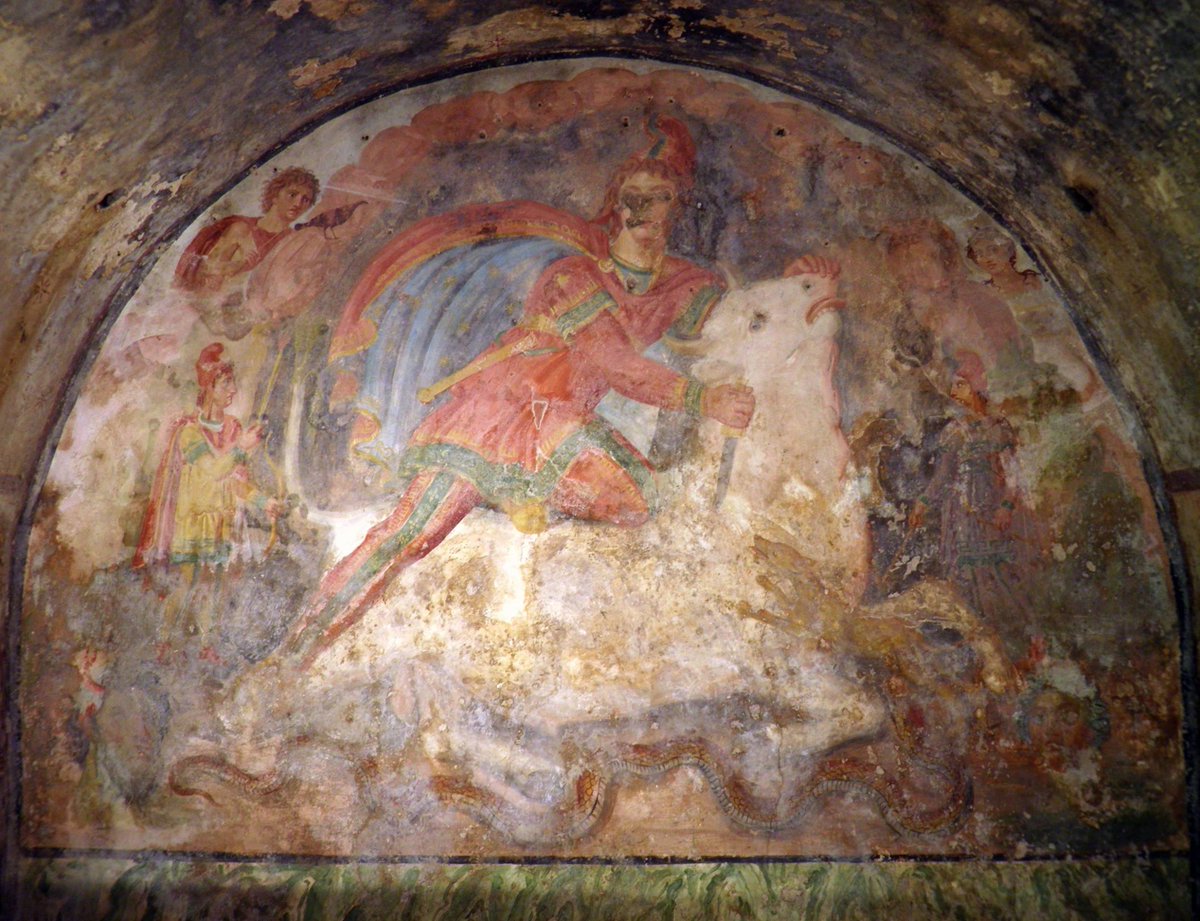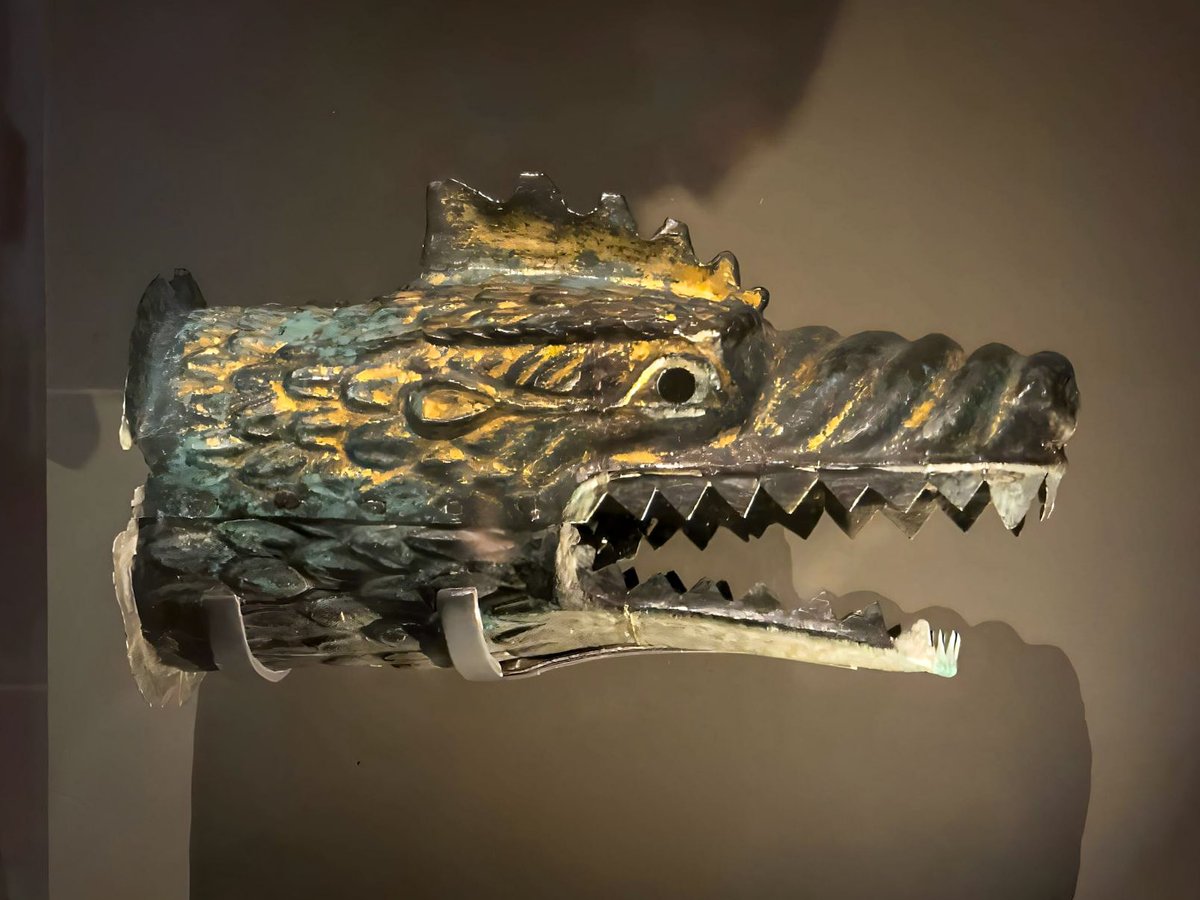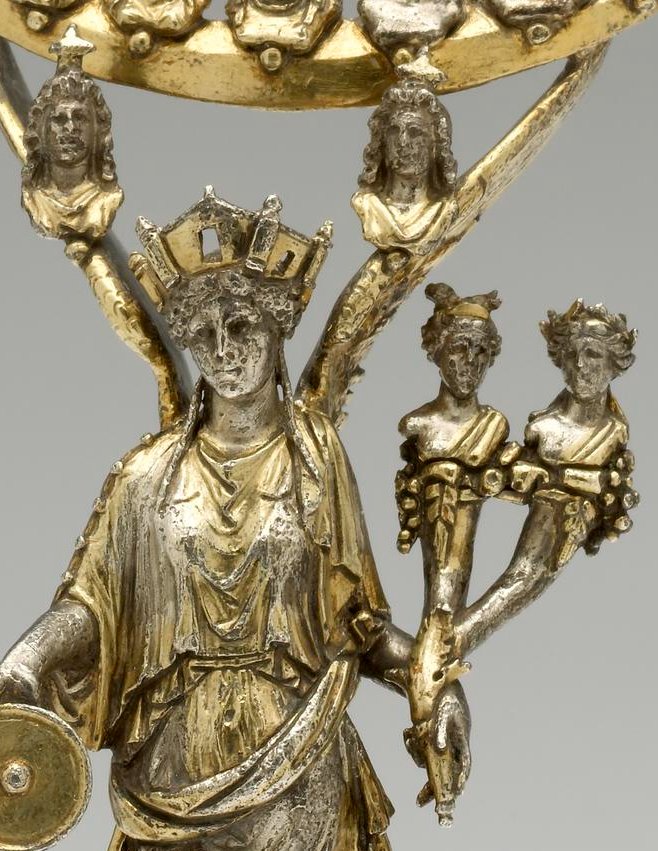What a party outfit! This new speculative digital restoration is the Roman god #Mithras, from a 2nd c. AD Roman sculpture in the British Museum. I’ve used the fresco from the #Mithraeum in Capua as the inspiration for Mithras’ pseudo-Persian outfit. 1/ #tauroctony 



The challenge was to interpret and render the colors and designs from the fresco in the #Mithraeum of S. Maria Capua Vetere onto the cult statue of #Mithras. The legging symbols: stars and planets, or rosettes and crowns? 2/ 



This sculpture is like many others from antiquity - it's had a restoration (19th c.). From documentation, I've been able to create this visual guide to the modern additions. That's why the head isn't *quite* right. Also, he looks too much like the boyish Ganymede. 3/ 

In an unrestored 'tauroctony' (old word for the bull-wounding, when it was thought it was a sacrifice), Mithras' face turns away, usually towards the image of Sol, the Sun. The Sidon cult image, below, right! (pic: @carolemadge). The one from the Vatican, wrong! (Colin, Wiki) 4/ 



Who is Mithras? He may resemble the Persian god, Mithra, but he's a Roman derivation. Both are connected to the Sun, but in Persia there's no bull wounding, and no temples in the ‘cave’ style of the Roman Mithraeums. We don’t know how the two are connected. Mithra, below. 5/ 

The Roman Mithras was born from a ROCK! The statue below was dedicated by Aurelius Bassinus, ædituus (curator of the cult installations) of the principia of the castra peregrina of the Imperial horseguards (equites singulares). 180-192 AD, Baths of Dio. (Jastrow, Wiki) 6/ 

Although there's one relief sculpture showing Mithras being birthed from the great Cosmic Egg, discovered at the Mithraeum at Housesteads Roman Fort on #Hadrian's wall. He's surrounded by the #zodiac, a very common element in Mithraea. Pic by @AlisonFisk. 7/ 

Mithras is associated with Sol Invictus, the Unconquered Son. And that's who he's usually looking at over his shoulder as he stabs the bull. Mithras is sometimes gilded in his official cult images, better to associate with Sol and to glitter in torchlight. 8/ 





Mithras is usually shown accompanied by his torch-bearers - Cautes (torch up) and Cautopates (torch down). They may symbolize dawn and dusk, light and dark, and/or life and death. Examples from the Sidon Mithraeum (Louvre, pics by @carolemadge). 9/ 



What’s up with the bull-stabbing?? The scene is used for every Mithraeum cult image, always the same. Mithras stabs the bull in the shoulder, a dog and snake lick the blood, and a scorpion may be eating semen from the testicles. 😱 10/ 



The bull may be connected with the zodiac Taurus, but it certainly seems to stand for bounty and fertility (its tail is sometimes rendered as a wheat stalk). Spilling its blood and semen may fertilize the land and nourish its creatures. (2nd pic, Forum Boarium @diffendale) 11/ 



The Mithraeum - the temple of Mithras - is usually windowless and cave-like (sometimes it's in a real cave). Stars are sometimes painted on a plaster ceiling (even with colored glass centers, as in Capua). This may be the primordial cave as the cosmos. 12/ 





Mithras was a *male-only* cult, very popular among Roman soldiers and customs officials (hence all of the Mithraea in the port of Ostia). It emerged in the 1st c. AD and died in the 4th c. with the social, economic and political changes accompanying the rise of Christianity 13/ 

I *could* go on about Mithraic initiation rituals, seven 'grades' (Roman seven planets, hence the seven large stars in his cloak, below), and the association with the planets and the zodiac, but maybe another time. In the meantime, enjoy this complicated restoration. 14/ 



@diffendale took the first pic (I'm showing a detail) from the encaustic fresco in the Mithraeum in Marino. The full image is fascinating. Loads of details - Sol, Luna, the battle between Jupiter and the Giants, and loads of other mythological scenes.
https://twitter.com/diffendale/status/1474973172659281922
• • •
Missing some Tweet in this thread? You can try to
force a refresh
































